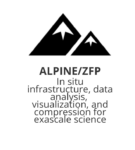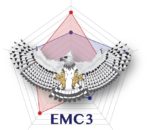With the advent of the exascale supercomputing era, computational scientists can run simulations at higher resolutions, add more detailed physical phenomena, increase the size of the physical problems, and couple multiple codes spanning both physical and temporal scales. These exascale simulations generate ever-increasing amounts of data. The Data and Visualization efforts in the US Department […]
ALPINE/zfp Addresses Analysis, Visualization and Data Reduction Needs for Exascale Science Applications
Los Alamos Reports Hardware Approach Offers New Quantum Computing Paradigm
Los Alamost National Laboratory reported today that a potentially game-changing theoretical approach to quantum computing hardware avoids some of the complexity in quantum….
@HPCpodcast: HPC Storage Rock Star Gary Grider Talks How We Got Here and Where We’re Going
http://orionx.net/wp-content/uploads/2022/04/021@HPCpodcas_Storage-with-Gary-Grider_20220420.mp3 Shahin and I are in violent agreement: if you’re interested in high performance storage, if major milestone in the development of HPC storage technology over the last 30-plus years interests you, if you want a peek at future forward leaps in HPC storage technology, then this is an @HPCpodcast episode for you. Our special […]
Los Alamos Names 3 Athena Engineering Scholars
The Athena Engineering Scholars Program is designed to inspire women to achieve their full potential as future leaders in engineering. The Athena Program is open to all LANL women, students and staff who are interested in pursuing a graduate engineering degree. The program offers educational assistance for engineering graduate degrees to highly qualified and motivated […]
Intel Launches 2nd Loihi Neuromorphic Chip; LANL Investigating ‘Trade-offs’ Between Quantum and Neuromorphic Computing
Intel today released an update on its neuromorphic computing strategy, introducing Loihi 2, its second-generation neuromorphic research chip, and Lava, an open-source software framework for developing “neuro-inspired” applications. Intel said Loihi 2 incorporates learnings from three years of use with the first-generation Loihi chip and leverages progress in Intel’s process technology and asynchronous design methods. The new […]
DOE: $26M Awarded to Labs, Universities to Advance Chemical Materials Sciences with Data Science
The U.S. Department of Energy (DOE) announced $26 million in research funding to harness research tools for clean energy solutions. The 10 projects announced today will help scientists to unleash the power of data science —including artificial intelligence and machine learning (AI/ML)—on experiments, theory, and computation-based methods to tackle the basic science challenges that will […]
Energy Secretary Recognizes Los Alamos Project Management for Exascale Class Computer Cooling Project
The team responsible for managing the Exascale Class Computing Cooling Equipment (ECCCE) project at Los Alamos National Laboratory was recognized by the Secretary of Energy with an Achievement Award last week. Construction of the project was completed last year, 10 months early and $20 million under budget, according to LANL. “The ECCCE project required bringing […]
South Africa’s National Integrated Cyberinfrastructure System joins EMC3 Consortium
Los Alamos National Laboratory’s Efficient Mission Centric Computing Consortium (EMC3) recently welcomed its first international partner, the South African National Integrated Cyberinfrastructure System (NICIS). “We are pleased to collaborate with NICIS on experiences in deploying a scalable cool data storage tier. Sharing requirements, solutions and experiences on challenges in providing an efficient computing environment is an important part of EMC3,” said Gary Grider, division leader for High Performance Computing at Los Alamos.
New Leaders Join Exascale Computing Project
The US Department of Energy’s Exascale Computing Project has announced three leadership staff changes within the Hardware and Integration (HI) group. “Over the past several months, ECP’s HI team has been adapting its organizational structure and key personnel to prepare for the next phase of exascale hardware and software integration.”
LANL’s EMC3 Consortium enjoys rapid growth in its first year
Just over a year after Los Alamos National Laboratory launched the Efficient Mission Centric Computing Consortium (EMC3), 15 companies, universities and federal organizations are now working together to explore new ways to make extreme-scale computers more efficient. “In the first year of EMC3 we have already seen efficiency improvements to HPC in a number of areas, including the world’s first NVMe-based hardware-accelerated compressed parallel filesystem, in-situ analysis enabled on network adapters for a real simulation code, identifying issues with file system metadata performance in the Linux Kernel, record-setting in situ simulation output indexing, demonstrating file-system metadata indexing, and more.”











